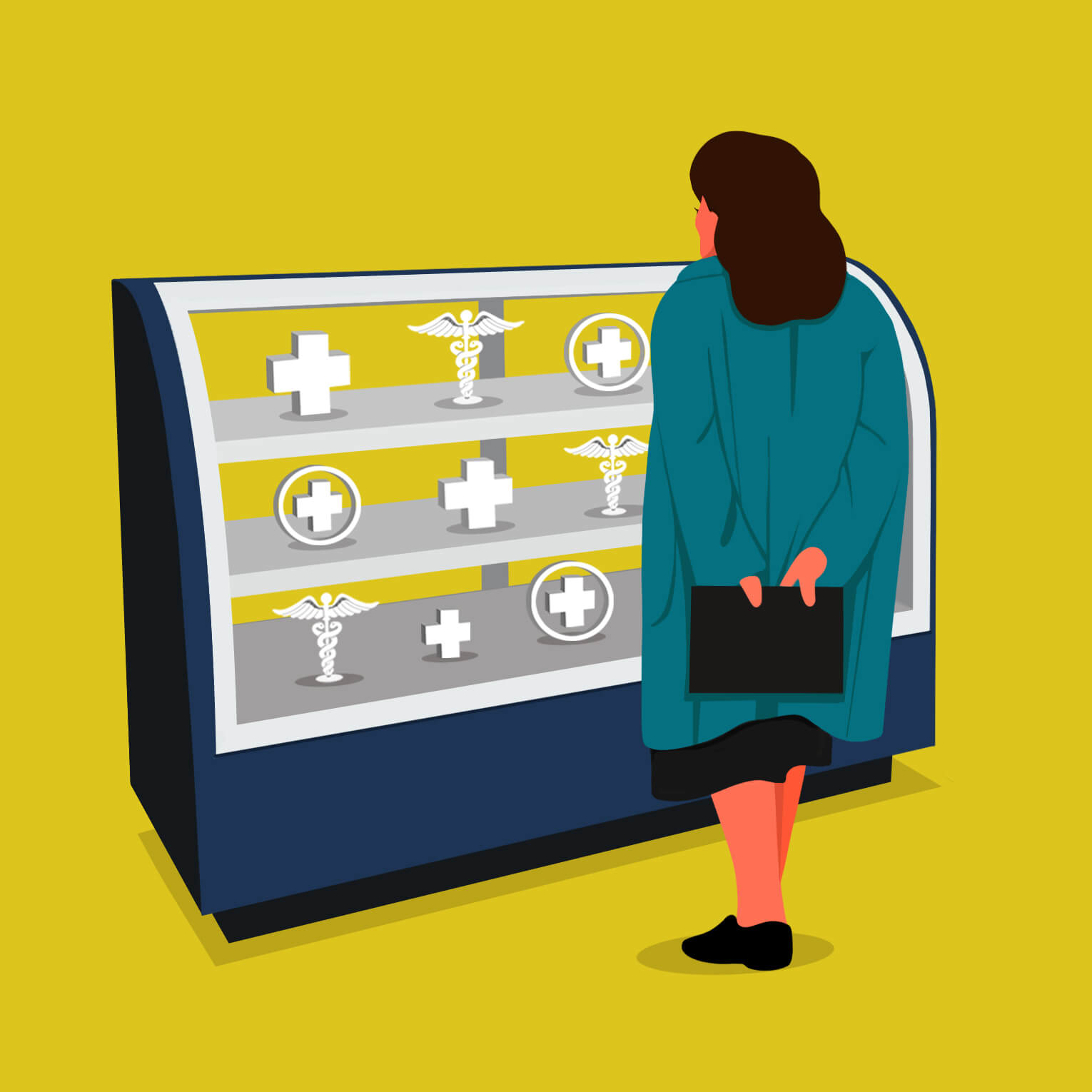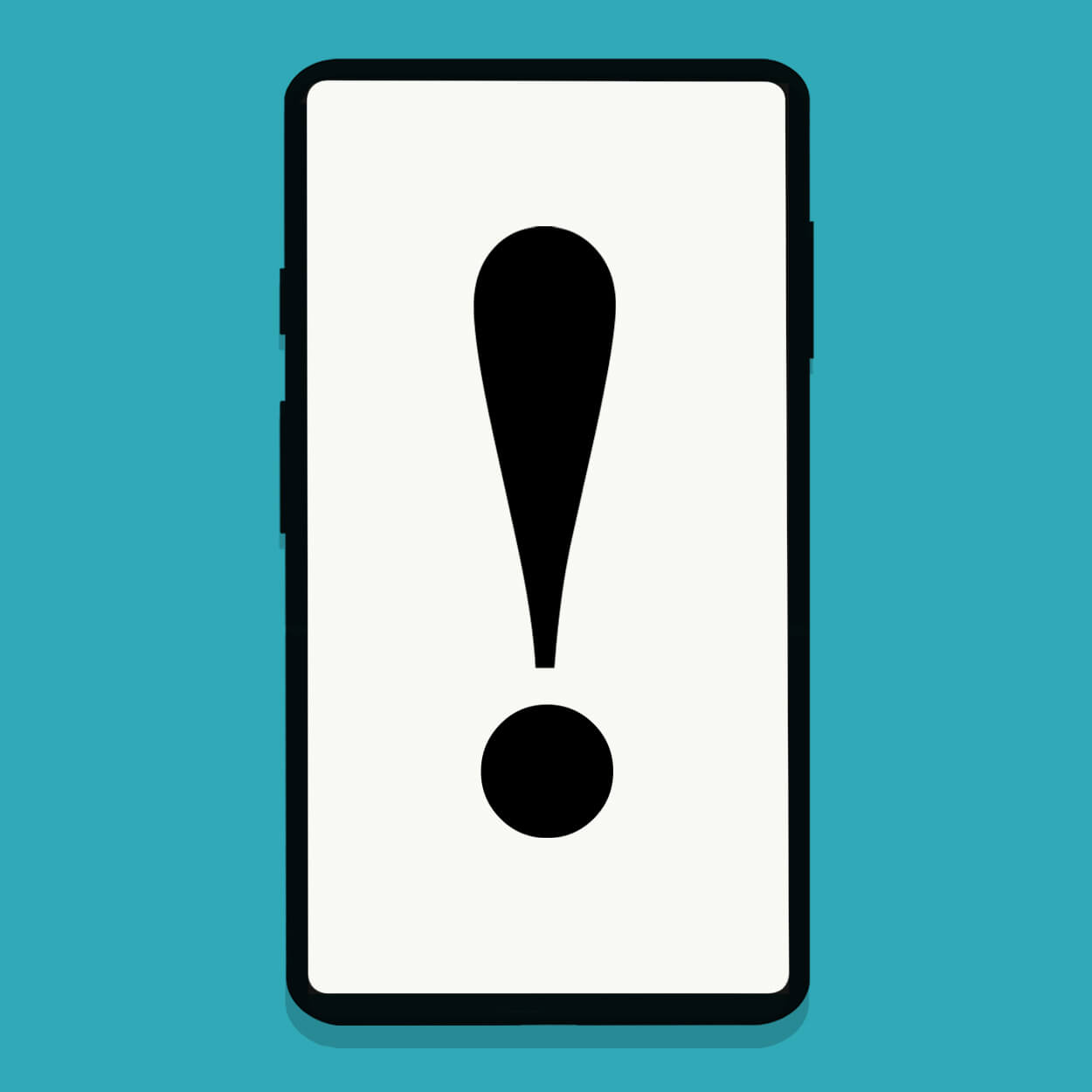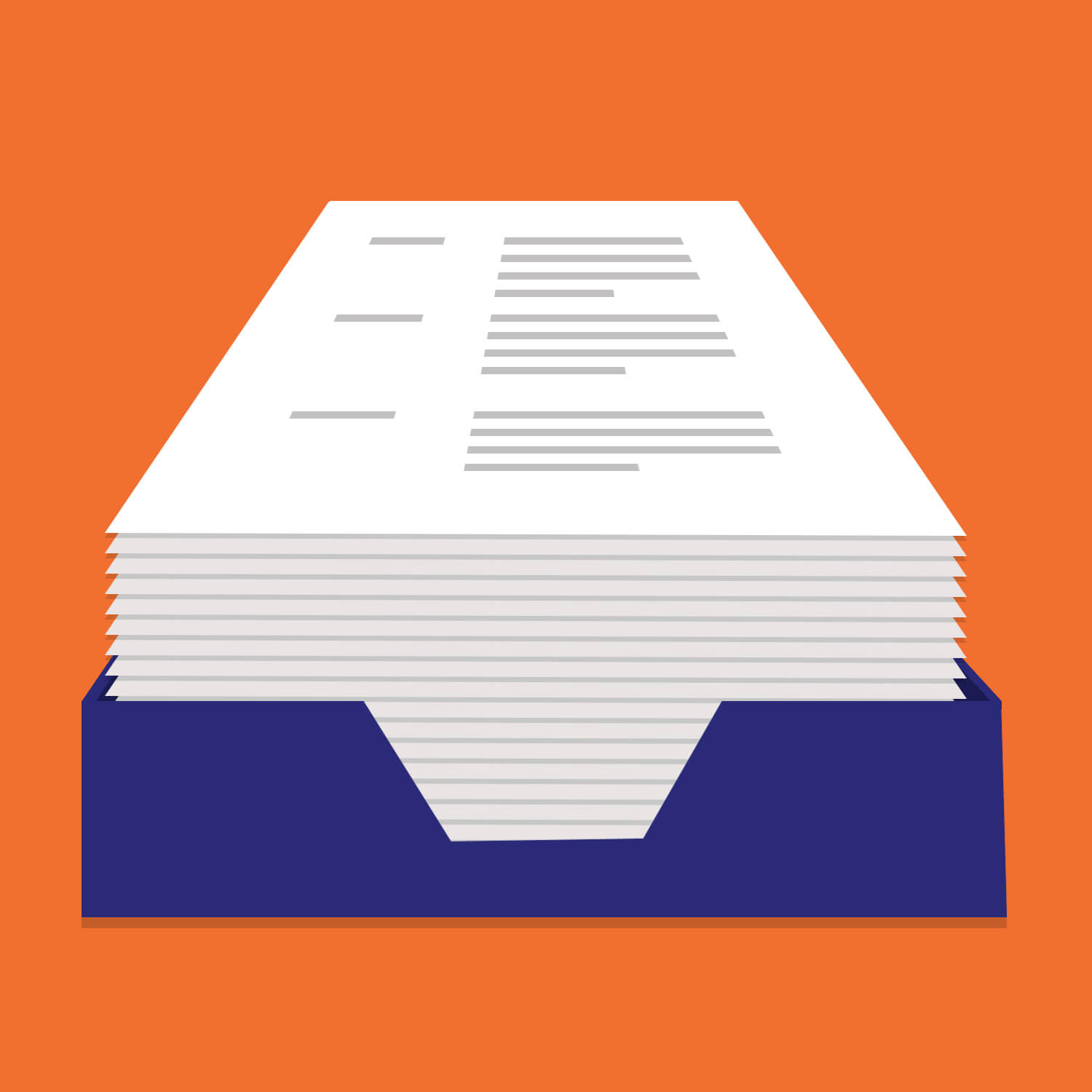Cover Story

Our world has become more digital, virtual and automated. At the same time, the post-pandemic economy can at times feel unstable. How do we navigate this new landscape and make the system work for us? Here are some ways to ...
OUTSMART THE SYSTEM!
ILLUSTRATIONS BY KIERSTEN ESSENPREIS

PHARMACY CLOSURES
Drugstores are closing retail locations. What options do I have? Between 2019 and the first half of 2024, more than 7,000 chain and independent drugstores closed in the U.S., according to a University of Pittsburgh study. CVS and Rite Aid have been closing hundreds of stores, and Walgreens announced plans for about 1,200 closures over the next three years. In addition, according to a February 2024 survey, a third of independent drugstore owners said they may also shut their doors before year’s end.
OUTSMART THE SYSTEM
▶︎ Don’t limit yourself to a single pharmacy choice: If you can, sign up for a health plan that gives you more pharmacy options, advises Dima Qato, an associate professor at the University of Southern California Mann School of Pharmacy and lead researcher in the 2019 study. If you’re on Medicare and need more options, you can switch your Part D drug coverage during the next open enrollment period, starting in October 2025. “People tend to be as loyal to their pharmacist as they are their physicians,” says Ray Walker, divisional director for the Medicare Assistance Program at the Oklahoma Insurance Department. “But if that preferred pharmacy isn’t going to be there in six months, it could create hardship.”
▶︎ Request a special Medicare enrollment period: If your pharmacy closes and the next closest in your plan is miles away, you might not be able to wait to get on a new plan, Walker says. “If a person finds themselves in this situation, they can contact 1-800-Medicare (1-800-633-4227) and request an ‘exceptional circumstance’ special enrollment period (SEP) to switch to a different plan.”
▶︎ Order by mail: This can be especially helpful for drugs that you take regularly, since they get delivered to your doorstep. Look for a mail-order or online pharmacy covered by your health plan, says Elvin T. Price, director of the Geriatric Pharmacotherapy Program at Virginia Commonwealth University.

UNEXPECTED MEDICAL BILLS
Where did these charges come from? Can I avoid surprise billing? Forty-three percent of American adults have received at least one problem medical bill in the previous five years, according to a 2022 national survey by KFF, a nonprofit health policy research group. Billing troubles can be overcharges or invoices for services not received, already paid, thought were covered by health insurance or those you just can’t afford. Problem bills are a big reason why 5.1 million older adults have medical debt that’s gone to a collection agency, according to the Consumer Financial Protection Bureau.
OUTSMART THE SYSTEM
▶︎ Speak up: About three-quarters of adults who challenged a mistake or unaffordable bill got help, according to an August 2024 University of Southern California survey. The results include bill corrections, payment plans, financial assistance, a price cut or bill cancellation.
▶︎ Ask for an estimate: Before an elective procedure or a long-term or potentially expensive treatment, get an estimate of the charges, says medical billing specialist Martine Brousse, owner of AdvimedPro in Culver City, California. “An estimate is not a final bill, but it can help you plan ahead.”
▶︎ Don’t pay right away: That first bill you get, say 15 to 30 days after a medical visit, may not have been processed by your health insurer yet, and so it may not reflect what you owe after insurance pays, Brousse says. “You shouldn’t pay a bill until after you see a final explanation of benefits from your insurance company or Medicare,” she says. If you overpay an early bill, you can get a refund, but it can be time-consuming.
▶︎ Compare the bill to insurance coverage: “The explanation of benefits will tell you whether a medical bill was processed correctly,” says Jenni Nolan, an independent patient financial advocate and owner of Clear Healthcare Advocacy in Carmel, Indiana. Common discrepancies that deserve a call to your provider include duplicate charges, coding errors, in-network charges billed at an out-of-network rate, denied services and bills never sent to your insurer.
▶︎ Challenge surprise ambulance fees: Consumers typically have no say over whether the EMT crew that responds to a call is in their network. This gap costs Americans $129 million a year, according to a 2020 study. “These bills can be thousands of dollars,” Nolan says. Don’t automatically pay that inflated, out-of-network ambulance bill. Instead, Nolan suggests, negotiate a lower rate based on published Medicare coverage rates for your area (available at cms.gov/medicare/payment/fee-schedules/ambulance). A standard offer is double the Medicare rate.

SOCIAL SECURITY HELP
The Social Security Administration says customer service is improving. Really? How can I get the assistance I need? Figuring out Social Security can be difficult, as can actually reaching someone to answer your questions. The Social Security Administration has lost more than 10,000 workers since 2010, while the number of Americans it serves has risen by more than 13 million people, according to the Center on Budget and Policy Priorities. The average phone wait time in the first seven months of 2024 was roughly 30 minutes. That’s an improvement over the 2023 average of about 36 minutes, but still longer than the roughly 20-minute average callers could expect in 2019.
OUTSMART THE SYSTEM
▶︎ Be prepared: Before calling or visiting a Social Security office, do as much research as you can on the agency’s website. “Consumers don’t always know the rules, so they don’t ask questions congruent with the rules,” says Philip Moeller, coauthor of Get What’s Yours: The Secrets to Maxing Out Your Social Security.
▶︎ Know when to call: Mondays and the days after holidays are the busiest times for Social Security reps. If a matter can wait, call on a Friday—typically the best day of the week to get assistance by phone. The agency also recommends calling early in the morning.
▶︎ Consider alternative locations: If you need to make an in-person visit to a Social Security office, check appointment availability in suburban areas, which tend to be less busy, says Kevin Chancellor, a certified Social Security claiming strategist and CEO of Black Lab Financial Services.
▶︎ AARP resources: Get the latest news, expert advice and answers to frequently asked questions about Social Security benefits at AARP’s Social Security Resource Center: aarp.org/retirement/social-security.
Or watch informative videos explaining Social Security benefits at youtube.com/@AARPAnswers.

MEDICARE
Medicare Advantage enrollment has been growing. Is this the year I should switch from original Medicare? You would not be alone. An increasing number of Medicare beneficiaries choose the plans from private companies—rising from 19 percent of eligible Medicare beneficiaries in 2007 to 54 percent in 2024, according to KFF. If you’re on original Medicare, you can switch to a Medicare Advantage plan, but generally not until the open enrollment period.
OUTSMART THE SYSTEM
▶︎ Consider the copays: When shopping for a Medicare Advantage plan, monthly premiums are only part of the story. In fact, two-thirds of Advantage plans charge $0 premiums (other than the Part B premium) in the 2024 plan year, according to KFF, and remember that old axiom “you don’t get something for nothing.” Be sure to check the copays. “If you have a five- to seven-day hospital stay and your copay is $200 to $300 every day, that could add up pretty quickly,” says Meredith Freed, a KFF senior policy manager.

▶︎ Understand provider networks: The majority of medical providers accept original Medicare, and you generally don’t need a referral to see a specialist. But Medicare Advantage plans use provider networks, so make sure you can see the doctors you like. “Many people come from employer plans that have provider networks, and they may not find it as big of an issue if that’s something they’re already familiar with,” Freed says.
▶︎ Prepare for authorizations—and appeals: Advantage plans have more prior authorization requirements than original Medicare. “We found in our surveys that prior authorization does serve as a barrier to care for some beneficiaries in Medicare Advantage getting the care they need,” says Gretchen Jacobson, vice president of Medicare for the Commonwealth Fund. Service denials aren’t all that common; in 2022, 7.4 percent of the 46 million Medicare Advantage prior authorization requests were denied in whole or in part, according to KFF. But you can appeal a denial; 83 percent of those appealed were fully or partially overturned.
▶︎ AARP resources: AARP has educational materials to help Medicare beneficiaries and their families make informed decisions. Check out the AARP Medicare Explained YouTube series at aarp.org/Medicarevideos, Medicare webinars and online learning at aarp.org/Medicarelearning, and the Medicare Resource Center at aarp.org/Medicare.

HELP WANTED
It seems like stores and restaurants are so short-staffed these days. What should I do? Staffing shortages have been prevalent since the COVID-19 pandemic. As Matt Tucker, head of Tock, an online reservation service, explains, there are a number of economic factors at play. “From inflationary pressures to changing worker preferences, many establishments are struggling to maintain adequate staffing levels despite great efforts.”
OUTSMART THE SYSTEM
▶︎ Check inventory before you go: Many major retailers’ websites can tell you if an item is available at a particular store, and sometimes even hold it for you. “Don’t drive to the store only to find out that the item you really wanted isn’t in stock,” says Jason Goldberg, chief commerce strategy officer at Publicis Groupe and e-commerce expert at RetailGeek.com.
▶︎ Look into personal shopper programs: “Some types of retailers, like luxury brands, department stores, furniture stores or even Best Buy will allow you to make an appointment in advance with a personal shopper,” Goldberg says. “This can be a great way to make sure you’ll get personal attention for that important purchase.”
▶︎ Time your trip: Goldberg suggests shopping during daytime hours on weekdays. “You can look a store up on Google Maps and it will give you the store hours and tell you what the store’s busy times are.”
▶︎ A little kindness goes a long way: Whether you’re dining or shopping, remember that many of the employees are working with fewer resources. “A large part of their day is dealing with customers who didn’t get the experience they want and are upset,” Goldberg says. “Being patient and having a bit of empathy for the employee is a great way to get their best service.”

SHOP ONLINE
With the decline of brick-and-mortar retail, how can I get the best shopping experience? Many retail chains that you may have frequented for years are reducing their brick-and-mortar stores. For example, about 600 Family Dollar stores closed earlier this year, and Macy’s will close an estimated 55 by the end of the year. So if you haven’t already, now is a good time to embrace online shopping.
OUTSMART THE SYSTEM
▶︎ Look for real reviews: How do you know if product reviews on shopping sites are legit? A listing with only positive reviews could actually be a red flag, Goldberg says. “It’s important that there are some negative reviews so that you know the review system is honest.”
▶︎ Don’t get stuck on one site: With physical stores, it might be more convenient to visit the same one or two repeatedly. But with online shopping, you should search for your item on sites such as Yahoo Shopping or Google Shopping, and those sites will show you how much it costs at various retailers. “People need to be willing to take some time up front,” says Trae Bodge, shopping expert at TrueTrae.com.
▶︎ Check the return policy: With a physical store, returns tend to be straightforward—just bring the item back. But online shopping involves mailing the item back, and that can be a hassle. That can be especially true when products are shipped from abroad, return policies may be strict, or you may have to pay a fee to send the item back. “Pay attention to the policy of what they will accept and how long you have to initiate a return,” Goldberg says.

PHONE SOS
Why is my phone so complicated? How can I make it work for me? New phones debut every year, and the added features can be confusing. “The smartphone went from an elegant object—which mixed a music player and a telephone—into something that is constantly trying to grab and keep your attention,” says Cal Newport, professor of computer science at Georgetown University and author of Digital Minimalism. “This has all made the phone into something that is very cluttered and distracting.”
OUTSMART THE SYSTEM
▶︎ Start from scratch: Newport suggests stripping down the apps on your phone to just the phone and text functions, a music player and a map app, and then rebuilding what you really need from there. A big reason for the clutter is that we often add apps on a whim and then rarely use them. “Have a high barrier for entry for any other app or service before you put it back on your phone,” he says.
▶︎ Declutter your home screen: As you add apps back in, take note of how you organize them. Liz Hamburg, founder and CEO of Candoo Tech, encourages users to keep apps they use the most on the first page of their phone’s home screen. “The simpler, the better. Move everything else to a secondary screen.”
▶︎ Adjust accessibility settings: Changing the font size or screen contrast can make it easier to navigate your smartphone. Try switching from light background to dark background to see if one is easier to read. Hamburg also suggests enabling Siri or another voice assistant that can type on your behalf if you have difficulty with your smartphone screen.
▶︎ AARP resources: The Personal Technology Resource Center (aarp.org/tech) offers news on the latest tech, plus how-to articles and videos.
Senior Planet from AARP offers free virtual tech classes, as well as useful articles, at seniorplanet.org. You can also speak to a trainer for help with a tech problem at 888-713-3495, on weekdays from 9 a.m. to 8 p.m. ET or Saturdays from 9 a.m. to 2 p.m. ET.

JOB SEARCH
Why won’t anyone look at my résumé? How can I get noticed? If you feel like you’re being ignored, you may be right. A typical corporate job opening can attract more than 250 applications, according to job site Glassdoor. With so many people applying for each position, most larger companies use technology that scans résumés first and filters out which applications get seen by an actual recruiter. And even if you make that cut, a person will typically spend just 7.4 seconds giving it a first read, one study shows.
OUTSMART THE SYSTEM
▶︎ Learn the right keywords: “The first hurdle is all about overcoming the machines,” says Edward McGoldrick, founder of Resume Professors and the Temp Experts staffing agency. He’s referring to the computer programs that perform a first pass. “The more relevant the résumé is written toward that job description, the better chance your résumé has.”
Read each job description carefully and make sure your résumé and cover letter contain some of that exact language, such as “designed,” “planned,” “collaborated,” “improved” or “innovated.” “Don’t use synonyms—use the keywords they give you in the job listing,” says Robyn Coburn, a Los Angeles-based résumé-writing expert. “It may only need a few words to bring it to the top of the list.” If you’re uncertain which words from the job posting are most important, paste the text into an AI tool such as ChatGPT, Microsoft Copilot or Gemini and ask it to identify the keywords.
▶︎ Follow all the instructions: This may seem obvious, but it often gets overlooked when submitting multiple applications. Make sure you follow the instructions for each application to the letter, Coburn says. “Did they ask for a cover letter? Did they specify a number of references?” Use the correct file formats for any documents you are asked to upload, and—if there is an online application—fill in each question, even if it repeats information on your résumé. The machine will bounce you out if you make little mistakes.
▶︎ Network: One way to beat hiring technology is to make a connection with someone who works for the company. “Engaging actively with recruiters and other professionals in your industry on LinkedIn can help you establish a positive reputation and demonstrate thought leadership,” says Keith Spencer, a career expert at FlexJobs. “If the name of the hiring manager has not been given, you may be able to sleuth it out via LinkedIn or the corporate website,” Coburn adds. “Failing that, you may be able to find the person who would be your supervisor and reach out. But make sure you have a real question about the company or position or hiring process, so your email has substance.”
▶︎ AARP resources: Check out aarp.org/work to see tips and resources for job seekers looking for work or just exploring their options, including information about finding part-time, flexible and work-from-home jobs.
Access the free downloadable resource “Strategies for a Successful Job Search” at aarp.org/jobsearchtoolkit.
The AARP Job Board (aarp.org/jobs) matches job seekers with employers that value experience. It provides easy-to-use filters so job seekers can apply for available positions across the country.
If you’ve been out of work for some time, AARP Foundation can provide expert guidance for your job search. The Back to Work 50+ program offers training, coaching, and other skills to navigate the job-hunting waters in your community or online. Go to aarpfoundation.org/backtowork50plus.
AARP Skills Builder for Work (aarp.org/workskills) helps you gain in-demand skills that could give you an edge in today’s competitive job market.


INTEREST RATES
The Federal Reserve has reduced its benchmark interest rate. How can I take advantage of lower rates? The Fed cut the rate by a half-point in September and another quarter-point in November. Declining interest rates can bring welcome relief for people aiming to consolidate debt, refinance a mortgage or apply for a loan. But there’s a flip side: Savers will earn less on safe, interest-bearing investments, such as certificates of deposit and money market accounts.
OUTSMART THE SYSTEM
▶︎ Lock in top savings rates: If you have cash on hand, don’t wait to put it in a CD, says Mark Hamrick, a senior economic analyst at Bankrate. The average yield on a 12-month CD was at 1.75 percent in early November, but online banks typically pay more. Consider the yield in early November on a 12-month CD offered by the online bank Marcus by Goldman Sachs: 4.2 percent. “I can’t stress enough: Shop around,” says Jacob Channel, senior economist for LendingTree.
▶︎ Weigh mortgage options: If you have been waiting to buy a home—or if you’re helping a child with their first purchase—this is a better time to jump in than a year ago. But it could still pay to wait a little longer. The average 30-year mortgage rate has dropped from a peak of 7.8 percent in October 2023 to 6.9 percent as of early November, and it’s likely to fall further. “It won’t drop to near the 3 percent we saw during the pandemic, but will probably go to the mid-5-percent range,” Channel says.
▶︎ Tackle credit card debt: It typically takes more than one Fed rate cut for credit card interest rates to fall noticeably. The average remains at nearly 25 percent, compared to 16.28 percent in 2020. “The best advice is to pay off your balance regularly. This can boost your credit score and enable you to take advantage of better deals” when they come, Channel says.

USED CAR SALE
New cars have gotten expensive. How can I get a deal on a used car? More than 36 million used cars were projected to change hands in the U.S. in 2024. While the average cost of a new car is approaching $50,000, the average list price for a used car is about half that, according to Cox Automotive.
OUTSMART THE SYSTEM
▶︎ Be patient: Every day in the U.S., on average, there are 99,000 used cars available. Sean Tucker, lead editor for Kelley Blue Book, says that dealers will try to convince you that the car you’re considering is the only one available, but the reality is another will come along. So it pays to wait for a price you like. All of your leverage comes in your ability to walk away, Tucker says.
▶︎ Be flexible: Hondas and Toyotas are popular in the used car market, and that means you may pay more for those than for similar models from other manufacturers. Ronald Montoya, senior consumer advice editor for Edmunds, notes that Fords or Hyundais might cost less, and you’ll have more cars from which to choose.
▶︎ Prioritize low mileage: Many buyers want a “late model” vehicle, meaning it is relatively new. But often those cars are on the market because the owner has racked up miles. Meanwhile, you can find deals by looking for older cars with lower mileage. “That means it hasn’t been driven as much,” Montoya says. “You won’t need some expensive repairs that might come at a higher mileage point.”
▶︎ Don’t fret a small dent: While everyone wants a beautiful car, scratches and dents might be an advantage. Tucker points out that in a private-party sale especially, those scars can give you a negotiating edge.
▶︎ AARP resources: Find expert advice on new and used car buying, including information on models, safety features and pricing, at aarp.org/auto/car-buying.

RISKY MARKET
This past year has seen some volatility in the stock market. How can I avoid the stress of the ups and downs? As of early November, the S&P 500 was up by more than 20 percent this year. But it’s been a wild ride. In August the CBOE Volatility Index (VIX), a measure of how frequently and widely stock prices swing, hit its highest level since the stock market collapse of March 2020, mainly because of concerns about the economy and geopolitical issues. “But if you focus on things you can control, instead of things you can’t, you can minimize your stress level,” says Gretchen Hollstein, a senior adviser at Litman Gregory Wealth Management.
OUTSMART THE SYSTEM
▶︎ Hedge your bets: Diversify across small, medium and large stocks, and different sectors. This way, when one stock or sector goes down, another may go up, potentially evening out portfolio performance. “Trying to pick the one stock or sector you think will win, and over-allocating to it, just isn’t prudent. It’s proven to be a loser’s game,” says David Johnston, managing partner at Amwell Ridge Wealth Management in Flemington, New Jersey. And think of your stocks as three- to five-year investments, at a minimum. This will help you resist checking in on their short-term fluctuations, says Lisa Policare, an adviser at Ameriprise.
▶︎ Rebalance your portfolio: Every few months, check your investment mix. A portfolio’s weightings of stocks, bonds and other investments shift, and over time will skew toward the better-performing asset classes. That sounds good, but it may not prepare you for downturns. “You may have more risk than you intend,” Johnston says. “Be sure to take chips off the table by rebalancing if that’s the case.”
▶︎ Tune out daily market chatter: Around-the-clock market news fuels anxiety, Johnston says. “Don’t be concerned about daily ups and downs. It can drive you nuts. Turn off the TV and live your life. I promise, you’ll feel better.”
Contributors: Rick DeBruhl, Sari Harrar, Karen Hube, Kimberly Lankford, Lexi Pandell, Kenneth Terrell and Martha C. White
HOW AI CAN HELP YOU OUTSMART THE SYSTEM
BY EDWARD C. BAIG
Dealing with an uncooperative customer service agent? Struggling to understand a wordy insurance document? Looking to compare one retirement investment plan to another? You may find help by using free software.
Artificial intelligence tools such as ChatGPT (chatgpt.com), Google Gemini (gemini.google.com) and Microsoft Copilot (copilot.microsoft.com) can help you outsmart the system, if you know their possibilities—and their limitations.
GET ADVICE
Start with the basics. An example: “What is the best way to save money on landline telephone charges?” Or “Is a nursing home appropriate for my aging mother who has dementia and mobility issues?”
But here’s where AI can beat a standard web search: You can follow up to drill down further. In the nursing home example, after you get the first piece of advice, you might ask, “How much is this going to cost in Florida?”
Another tip: Ask the AI bot to suggest questions you hadn’t thought of or for help finding other resources. “Just have a free-flowing, friendly chat and see where your curiosity takes you,” says Jenny Blackburn, Google vice president of UX for Gemini experiences.
DRAFT A LETTER
Having trouble crafting that email to a company’s customer service center? Ask AI to get you started. What comes back can be a useful “first draft,” says Michael R. Miller, author of Using Artificial Intelligence: Absolute Beginner’s Guide From AARP. Then massage the missive to make it your own.
Sample Letter from AI
WE USED CHATGPT TO CREATE THIS DRAFT LETTER IN A FRACTION OF A SECOND:
PROMPT
What can I help with?
Draft a letter to the airline for compensation for my lost suitcase and its contents.
RESULT
Subject: Request for Compensation for Lost Suitcase and Contents
Dear Customer Service Team,
I hope this message finds you well. I am writing to formally request compensation for my suitcase that was lost during my recent travel with [Airline Name] on [Flight Number] from [Departure City] to [Arrival City] on [Date of Travel].
Upon arrival at [Arrival City], I discovered that my suitcase did not arrive. I promptly reported the issue to your baggage services desk and was given a reference number: [Reference Number]. Despite my efforts to track the suitcase, I have yet to receive any updates regarding its whereabouts.
The suitcase contained several valuable items, including [briefly list significant items and their approximate value, if possible]. The total estimated value of the contents is [Total Value]. Given the circumstances, I believe I am entitled to compensation for both the lost suitcase and its contents.
I have attached copies of all relevant documents, including my boarding pass, baggage claim ticket, and any correspondence related to this matter.
I appreciate your prompt attention to this issue and look forward to your response regarding the next steps in the compensation process.
Thank you for your assistance.
Sincerely,
[Your Name]
[Your Signature (if sending a hard copy)]
[Attachment List]
PRACTICE AND STRATEGIZE
Before a job interview, ask the AI bot to go through a written mock interview exercise with you. Or if you need to question a confusing charge on your credit card statement, ask it to help you formulate talking points for that often-stressful call with customer service.
SUMMARIZE AND SIMPLIFY
AI bots can summarize lengthy documents you upload, while simplifying jargon or summarizing complicated topics. “Ask the AI bot to ‘explain it to me like I’m an eighth grader,’” Miller says.
ASSIGN A ROLE
To get better responses, give AI a specific task, advises Mike Reilley, an AI trainer for the Online News Association. For example, enter: “I am a senior citizen living in Fort Lauderdale, Florida, and I want to write a nice welcome letter for my event at a country club.” “If you give it a hat to wear, it will do the job much more accurately,” Reilley says.
AVOID THESE PITFALLS
Don’t take the results as gospel. Content can be inaccurate, so verify information. Be especially wary of AI for legal, medical and financial advice. And don’t enter any financial or revealing personal data.
Edward C. Baig writes about personal technology for AARP.